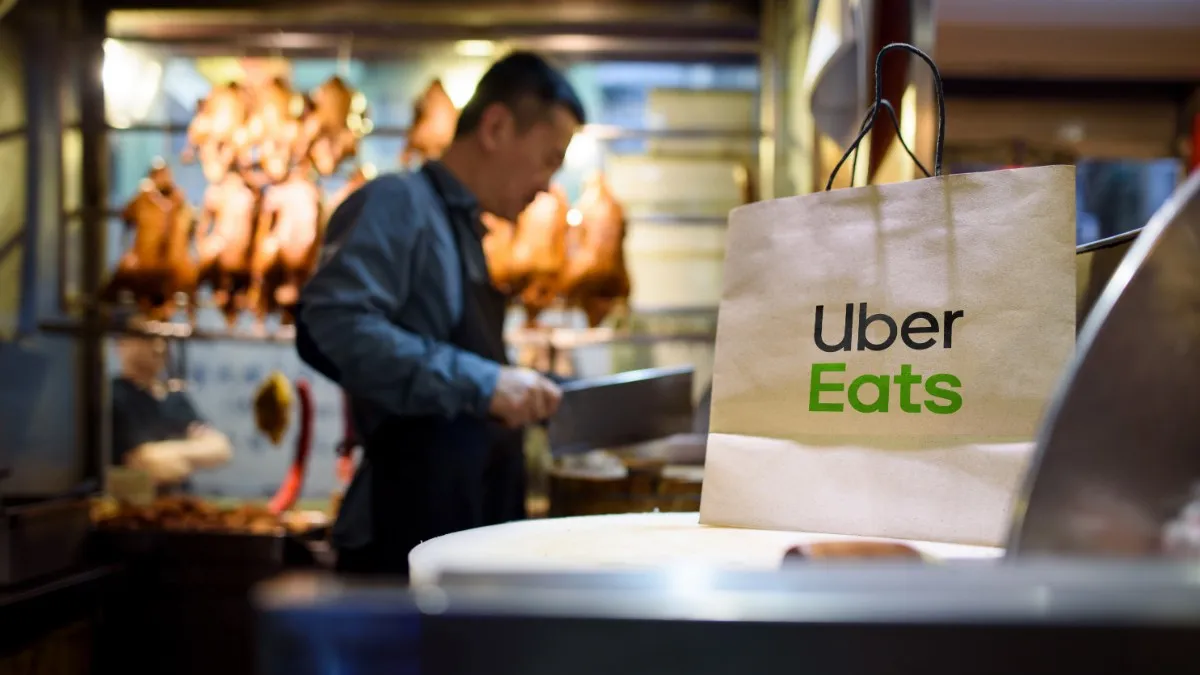Dive Brief:
- Uber Eats grew its monthly active platform consumers by 140% during Q2 2019, of which 40% were new to the Uber platform, according to an earnings release. Year-to-date, the company's gross bookings reached over 6.4 billion, an increase of 99% compared to the previous year-to-date. Adjusted net revenue increased 43% year-to-date to $576 million compared to the previous year's period. New delivery fees related to service and small-baskets improved the company's adjusted net revenue rates quarter-over-quarter.
- Grubhub increased its revenues during the first half of the year by 37% to $649 million. Its active diners were up 30% to 20.3 million, according to an earnings release.
- Waitr boosted active diners 248% to 2.4 million year-to-date compared to 679,000 during the previous period. Its revenue increased to $99.4 million during the first half of the year compared to $28.6 million for the first half of 2018, according to an earnings release.
Dive Insight:
While public third-party aggregators increased revenue, customers and bookings, the first half of the year hasn't been easy. Grubhub has been under the microscope following negative media surrounding its fees and use of microsites to help promote restaurants. Even private company DoorDash said it would change its tipping structure following backlash from customers, while Postmates had to fend off rumors that it was considering a sale given the fact that it filed a private IPO and has yet to officially debut on the public market.
Despite negative press, Grubhub CEO, founder and director Matthew Maloney told investors during a July earnings call that the company increased its restaurant partners by over 10,000 since April and posted another record quarter of new independent restaurant partners. It currently has over 35,000 enterprise restaurant locations on its marketplace and 100 national and regional brands that are driving about 100 orders each day, Maloney said. Its net income did decline by 86.6% to $8.1 million year-to-date compared to $60.9 million during the previous period, suggesting that more work will be needed to improve income.
Profitability also remains elusive at Uber Eats despite the increase in revenue. Uber posted a hefty loss of over $6.5 billion in losses year-to-date and CEO Dara Khosrowshahi told CNBC that he expects Uber's losses to subside in 2020 and 2021, but doesn't expect profitability for Uber Eats as it pushes for more growth.
As it grows into new markets and boosts its customer base, it has added new strategies to retain customers. It's already seeing some success with its loyalty program and enrolled users were twice as likely to use both rides and Eats than non-enrolled users, Khosrowshahi told investors during an August earnings call. The company has been testing subscription products and working on improving restaurant onboarding efficiency and better POS integration through partnerships with companies like Olo, Khosrowshahi said.
Its take rate was 10.2% for Uber Eats compared to 7.8% quarter-over-quarter due to its new service fee structure, which was launched during the first quarter, CFO Nelson Chai told investors.
Waitr did increase revenue and customer base following its BiteSquad acquisition, but its net losses rose to $49.6 million year-to-date, an increase of over 350% from $10.8 million during the previous period. The company said in the earnings release that it has started a review of strategic alternatives to enhance shareholder value, which could include a continuation of its current business plan, disposition of certain assets, a strategic business combination, a sale or a combination of any of these.
The company has already issued layoffs at its headquarters in Louisiana and attempted to change its fee structure for restaurants depending on order volume, but faced heavy backlash.
Given its strength in the Midwest in small and medium markets, Waitr could be a strategic purchase for a larger delivery company, including Grubhub and Uber Eats, that could use the purchase to expand within the Midwest and into some smaller cities.














